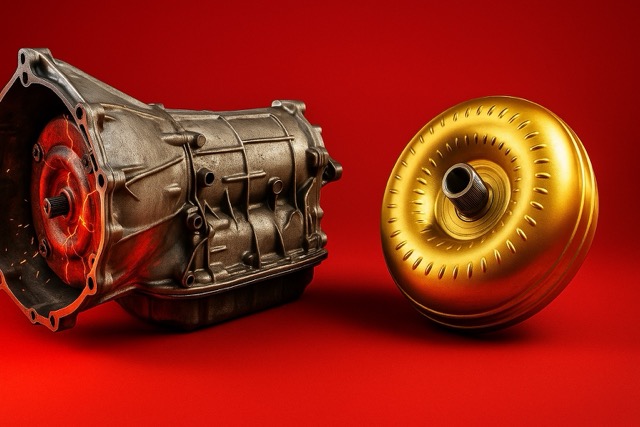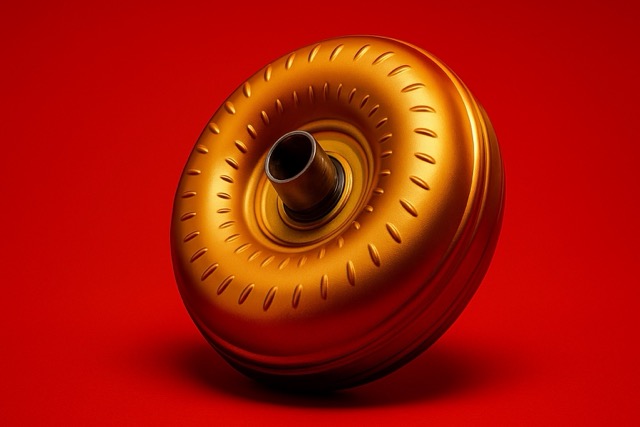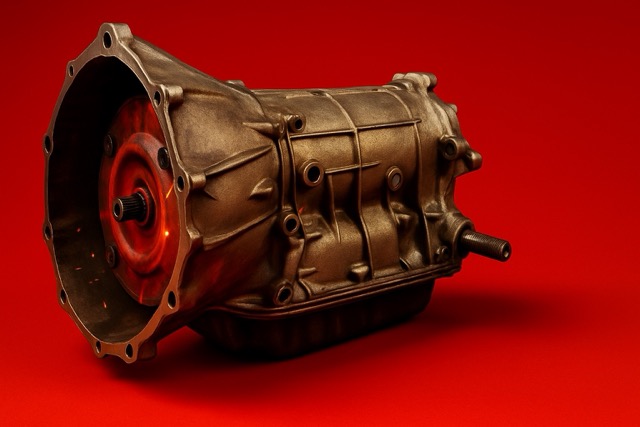Signs and symptoms of a Bad Torque Converter vs Bad Transmission Symptoms: how to tell the Differences. So your car starts shaking, the RPMs jump for no reason, and your first thought is… “Great. My transmission is done.”
I get it, that’s exactly what most people think when they feel a slip or a weird shudder. But here’s the thing, most drivers don’t realize:
Sometimes the problem is not the transmission at all… It could be the torque converter, a solenoid, or even low fluid.
And if you replace or work on the wrong part, you could end up wasting thousands of dollars on a repair you didn’t actually need and still end up with the same problem.

Signs of a Bad Torque Converter vs Bad Transmission Symptoms to look out for.
So before you spend a single dollar on any repairs, watch this and be sure to stay with me, because in this article, I’m going to show you how to tell, very clearly, whether you’re dealing with a bad torque converter or a bad transmission.
And toward the end, I’ll also walk you through some of the frequently asked questions you might have on this topic, ones most people don’t even think to ask, but absolutely should.
Now, I know, you be thinking why is this even important? What do I care?
Well, because the symptoms of a bad torque converter and those of a bad transmission can look almost identical, or they are similar. For instance, the car slips in both cases, shakes, the RPMs climb, and maybe the car won’t go into gear, then automatically, we assume the transmission is dead.
Part of the problem is… a lot of mechanics will also assume the same thing, and the next thing you know, you’re being quoted $3,000 to $5,000 depending on your vehicle make and model for a complete transmission replacement…
…when in reality, it might’ve only been a $700 torque converter (or in some cases, just the torque converter clutch or $50 Solenoid). Yeah, this happens way more often than most people think.
The good news? In most cases, you can tell the difference yourself using a couple of easy checks, without tearing anything apart or buying expensive tools.
But first, you need to understand what each part actually does.
What does the Torque Converter do, vs the Transmission?
Starting with the torque converter.
The torque converter is found only in automatic vehicles.
Think of it as the middleman between your engine and the transmission.
Your engine spins → the torque converter transfers that spinning energy to your transmission → and the transmission passes it down to the wheels.
But here’s the important part:
Unlike a manual car (which uses a clutch), an automatic uses fluid inside the torque converter to transfer power.
Inside the torque converter, you’ve got a few key parts:
- The impeller, which spins with the engine
- The turbine, which spins the transmission input shaft
- The stator, which redirects fluid for more torque
- And sometimes a lock-up clutch, which locks everything together at highway speeds for better fuel efficiency
When the torque converter is healthy, you get smooth acceleration and no RPM spikes.
When it starts to fail, the connection between those components becomes sloppy, and that’s when you feel shuddering, slipping, or delayed engagement.
Now let’s look at the transmission itself.
Your transmission is the component that actually selects the gear ratios.
Its only job is to decide how much power from the engine should be sent to the wheels, whether that’s first gear for takeoff or overdrive gear for highway speeds.
If it’s a manual, you’re shifting the gears with the clutch.
But in an automatic vehicle, the transmission shifts automatically using hydraulic pressure and clutch packs inside the unit.
There’s no torque converter in a manual; it uses a friction clutch.
So for this article, we’re focusing only on automatic transmissions, because that’s where the torque converter vs transmission confusion happens.
Alright, now that we’re clear on what each part does and how they work together,
What are the signs of a failing torque converter? What are the signs of a failing transmission? And how do you tell the difference so you don’t waste money fixing the wrong thing?
Signs of a Failing Torque Converter (Bad Transmission symptoms)

Alright, now let’s talk about what happens when the torque converter starts going bad, and how it actually feels when you’re behind the wheel.
Shuddering or vibration during acceleration
This is one of the earliest and most common warning signs. You step on the gas to merge onto the highway or pass someone, and the whole car suddenly starts to shake, almost like you’re driving over a small rumble strip. It usually lasts a few seconds and then goes away. That’s the torque converter clutch starting to slip instead of locking up smoothly.
RPM spike at highway/cruising speeds
Another classic sign is when you’re cruising at, say, 60 or 70 mph and suddenly the RPMs jump even though your foot is steady on the accelerator. Almost like the engine revs up for no reason. What’s happening is the converter isn’t fully transferring power, so the engine spins faster, but the wheels don’t respond.
Drop in fuel economy (no check engine light)
A sneaky one, your gas mileage slowly gets worse and worse, but the dashboard isn’t giving you any warnings. No codes, no lights. That’s because the lock-up clutch inside the converter isn’t engaging, which forces the engine to work harder to maintain highway speed. More RPM equals to more fuel burned.
Overheating or burnt-smelling transmission fluid
Because the torque converter uses hydraulic fluid to transfer power, when it starts to slip, it generates a lot of extra heat. And that heat gets dumped right into the transmission fluid. If you check the fluid and it’s hot or smells burnt (kind of like burnt toast), that’s a big clue the converter is struggling.
Delayed or harsh engagement when shifting into Drive or Reverse
Ever shift from Park into Drive and the car takes two seconds before it actually “catches”? Or maybe it CLUNKS into gear and you actually feel it slam through the drivetrain. Those delayed or rough engagements are often caused by the converter not engaging smoothly with the input shaft.
Mild whining or clunking at idle or low speed
Sometimes you’ll hear a faint whining or clunking noise when the vehicle is idling in gear or just starting to move. The noise often disappears once you start driving faster. That’s usually internal wear in the converter, bearings, stator, or even the clutch surfaces.
So keep in mind, most torque converter symptoms show up during acceleration or steady cruising, because that’s when the converter clutch is supposed to lock up. When it starts slipping at those moments, you feel it right away.
Signs of a Failing Transmission

Now let’s move on to the transmission itself, and these symptoms are a little more severe.
Gear slipping at any speed (especially under load)
Transmission slipping doesn’t care how fast you’re going. You could be taking off from a stop or climbing a hill at 35 mph, and suddenly the car feels like it went into neutral. The RPMs rise, the speed drops, and the car feels like it “lets go” for a second.
Delayed or zero engagement when shifting into gear
You shift into Drive or Reverse… and nothing happens. Or you wait several seconds before it finally engages. This usually means internal clutches or bands inside the transmission are worn or failing.
Grinding or whining noises in all gears
Unlike a bad torque converter (which may only make noise at certain speeds), transmission noise is constant. You’ll hear a grinding, whining, or clunking sound no matter what gear you’re in, and sometimes even in Neutral.
Burnt or black transmission fluid
When the clutches and bands inside the transmission start failing, they literally burn the fluid. You’ll often pull the dipstick, and it’ll be dark, burnt, or even glittery (from metal debris). This is usually more severe than torque converter fluid discoloration.
Transmission or check engine light
Modern vehicles often monitor transmission pressure and operation. So if the TCM (or ECU) senses something isn’t right, it may trigger a check engine or transmission warning light. Not always, but often enough to take it seriously.
Completely stuck in one gear
This one needs no explanation; the car is basically stuck in first or second gear and refuses to shift at all. Torque converters rarely cause this. This usually points to a major internal failure in the transmission.
Mini Recap:
In simple terms, transmission problems don’t care about speed. They show up everywhere, low, mid, or high, and they usually escalate quickly if you ignore them.
Torque Converter vs Transmission: How to Tell the Difference.
So how do you actually figure out which one it is?
Speed-specific symptoms
Torque converter problems usually show up at specific speeds, especially during acceleration or highway cruising.Transmission problems can happen at any speed and typically get worse over time.
Fluid color & smell.
Pull the dipstick (if your vehicle has one).
• Pink/red and clean = healthy
• Dark, burnt, or gritty = possible transmission failure
Torque converter failure might cause mild discoloration, but a fully burnt smell usually points to the transmission itself.
Scan tool codes.
Plug in a basic OBD2 scanner.
• Codes like P0740, P0741, P2769 usually point to torque converter clutch issues
• A wider range of codes, especially pressure-related or gear ratio codes, typically points to the transmission
30-second driveway test
Start the car, hold the brake, and shift into Drive. Watch the RPMs at idle. If they jump or bounce unusually high while in gear (foot still on the brake), it’s likely the torque converter slipping and failing to engage. A transmission will usually engage hard (or not at all).
Now here’s where things really get serious: the cost difference. A torque converter replacement will typically run anywhere from $600 to about $1,200, depending on your vehicle and labor rates. That’s not cheap, but it’s still nowhere near the cost of a full transmission replacement. If the transmission itself has failed, you’re usually looking at $2,500 minimum, and in many cases, four or five thousand dollars or more. And that’s why misdiagnosis hurts so much. Replacing the wrong part doesn’t just delay the real repair; it basically doubles your repair bill. I’ve seen people spend three grand on a fresh transmission only to find out months later that the real problem was the converter the entire time.
So with that in mind, let’s look at a few quick FAQs, because I know a lot of you are probably still wondering about a few specific things.
Can a bad torque converter damage the transmission if you ignore it?
Yes, absolutely. A failing converter often generates excess heat and even shaves debris into the fluid. That contaminated fluid runs through the entire transmission and slowly wears out the internals.
Can a simple fluid change fix a torque converter problem?
Sometimes, if the issue is minor and caused by dirty fluid. But if anything inside the converter is physically damaged, no amount of fresh fluid is going to save it. It might smooth things out temporarily, but it won’t fix the root of the problem.
Can both the converter and transmission fail at the same time?
It can happen, but usually one fails first and ends up harming the other. In most cases, the torque converter is the one that goes first.
Is vibration or shuddering always the converter?
Not always. Bad motor mounts, worn CV axles, or even a tire with a broken belt can cause very similar vibrations. That’s why diagnosis is so important.
Are there any DIY tests?
Yes, you can do a stall speed test if you know what you’re doing. But that puts stress on the transmission, so be careful. A safer at-home check is to pay close attention to how the car behaves when shifting into gear. Delay, shudder, or bouncing RPMs usually point toward the torque converter.
Do these issues always trigger a code?
Nope, especially when they’re just starting. A bad torque converter clutch might not trigger a DTC until it’s almost completely gone. That’s why you never rely on scan tools alone. Symptoms and fluid condition matter just as much.
